John Hurrell – 31 May, 2023
Of course, issues for photography are related to that of other art practices that range from photographic documentation of performances or exhibitions, to the more difficult storage of non-photographic objects like large sculpture or painting. This is assuming that—whatever their nature—such artworks and working methodologies are deemed desirable by collecting institutions, and that they have plentiful storage facilities and enthusiastic staff. The demand for such facilities is highly competitive; they are sought by many kinds of art practitioner.
Auckland
John B. Turner
New Zealand’s Photo Treasures Heading For the Tip?
This Photoforum website presents eight articles (often based on interviews): lengthy (very detailed) discussion papers by John Turner on photographic archiving. It is listed in the lefthand ‘Blog’ column at the bottom of EyeContact’s front page.
Most artists shudder at the thought of what might happen to their accumulated, unsold output when they die. (They assume collectors will carefully preserve purchased items.) Will much—if any—of what is found in the artist’s workspace and home, be salvaged so it can then be looked after by admirers, in or outside the family? Will some institution look after it? (Assuming the institution sees the artist as worthy.) Or is it destined for the dump? Discarded to be forgotten.
The dominant issues raised for in-depth examination in this anthology of papers revolve around the preserving of analogue and digital items by professional staff in institutions, and what photographers can do in preparation. Therefore, pressures of need are looked at, processes of selection, historic or aesthetic evaluation for future maintenance and exhibiting are encouraged, and availability of institutional resources analysed.
Of course, issues for photography are related to that of other art practices that range from photographic documentation of performances or exhibitions, to the more difficult storage of non-photographic objects like large sculpture or painting. This is assuming that—whatever their nature—such artworks and working methodologies are deemed desirable by collecting institutions, and that they have plentiful storage facilities and enthusiastic staff. The demand for such facilities is highly competitive; they are sought by many kinds of art practitioner.
Amongst Turner’s many image-making preoccupations (themes that regularly slide into the camera’s viewing rectangle) are the passing of time, the migration of diasporic communities and various cultural shifts within a single location: reoccurring interests interspersed within his densely argued texts. Indeed the varied visual labours of many photographers contribute to these papers, and that is one of the pleasures they provide, even before you start reading. Some of them are bound up in notions of national heritage and collective memory, pitching to specific communities, but not all of them.
Turner is refreshingly opinionated and informed—he is never short of constructive ideas. While his writing style is wordy, it is not waffly or obtuse. He is very clear and lively when talking about his own working life and various image-making preoccupations (often community related), or conversing with institutional professionals. We have: Athol McCredie, Te Papa Tongarewa’s photography curator; Caroline McBride, the archivist for the E. H. McCormick Research Library at Auckland Art Gallery Toi o Tamaki; the late Ron Brownson, senior curator at Auckland Art Gallery; Gael Newton, consultant curator and photography researcher in Canberra; Natalie Marshall, photography curator at Alexander Turnbull Library; and Ken Hall, curator in Christchurch Art Gallery Te Puna o Whaiwhetu.
The organisations whose policies he meticulously focusses on are, apart from those listed above: Auckland Libraries, the Department of Internal Affairs, the Department of Heritage, and the Canterbury Museum.
If we attempt to look into the future, and the agendas or briefs of government-funded archive-collecting institutions, it is very hard to reliably anticipate their curatorial points of focus—say employing different freelance exhibition organisers—when thinking about the types of photography they could be attracted to.
Of specialist photographic categories to be researched, some might fall into the following speculative types beyond the expected community-oriented general Social Histories, or Histories of Fine & Applied Art. These could include provocative or reactive Avant-Gardist traditions; a dialectical History of Political Argument (with oppositional shifts); History of Religious, Spiritual or Philosophical Ideas; the History of Education (espousing many contradictory pedagogical value systems); History of Technology and Manual Craft; History of Science; the History of Labour; History of Recreation (ranging from strenuous sporting activities to word games and eloquent verbal toastmastering); or the Histories of Reading, Cooking and Clothing. These would obviously overlap.
Despite such limitless and varied sorting possibilities seemingly looming ahead (as different disciplines become more and more fragmented—as is apparently the case), John Turner’s rich and exhaustive investigations of the present state of affairs remain immensely interesting, presenting indisputably valuable information for all curious (but sensibly worried) photography-based artists.
John Hurrell
Recent Comments
Ralph Paine
“Memory can only be based on selectiveness, and thus on erasure, forgetting, oblivion. The idea that everything can be remembered ...

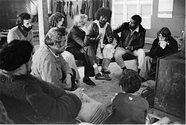
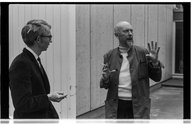
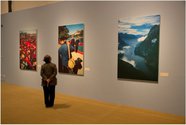





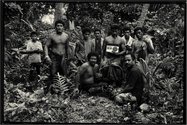
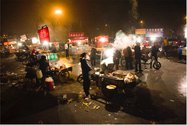

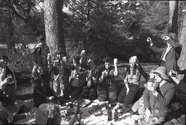

 Advertising in this column
Advertising in this column Two Rooms presents a program of residencies and projects
Two Rooms presents a program of residencies and projects



This Discussion has 1 comment.
Comment
Ralph Paine, 10:58 a.m. 1 June, 2023 #
“Memory can only be based on selectiveness, and thus on erasure, forgetting, oblivion. The idea that everything can be remembered and therefore recorded—that nothing can ever disappear—is the nightmare of a civilization where time does not exist, and which therefore not only rejects the past as a place of disappearance but also the future as a place of transformation.”
—Pietro Bianchi
Participate
Register to Participate.
Sign in
Sign in to an existing account.